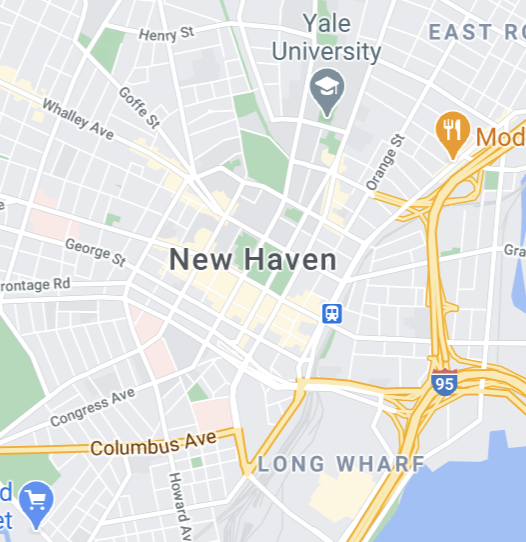New Haven, Connecticut, founded by the English Puritans, was laid in a grid known as the Nine Square Plan – eight squares of 25 acres each arranged around an open public marketplace at its center. The central square forms a dual cross axis of streets defining the edge of the square, with perimeter streets in a 4×4 layout. New Haven’s model was unique among the New England colonies, having been inspired by the orderly, contained aspects of ancient Greek and Roman military camps. The increase in automobile traffic and suburban growth led to street extension, grid deformation, and block manipulation, which gave rise to an orthoradial grid. New Haven was a good attempt at a planned grid city, but it grew in a way that lost the intended right square grid design.
New Haven, Connecticut
